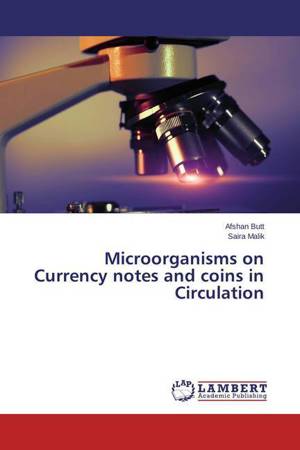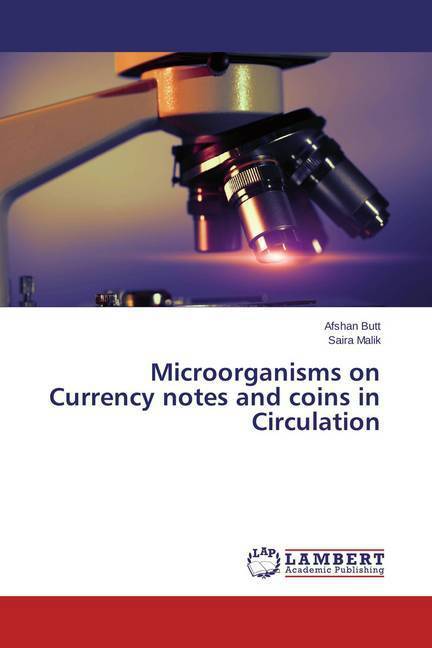
- Afhalen na 1 uur in een winkel met voorraad
- Gratis thuislevering in België vanaf € 30
- Ruim aanbod met 7 miljoen producten
- Afhalen na 1 uur in een winkel met voorraad
- Gratis thuislevering in België vanaf € 30
- Ruim aanbod met 7 miljoen producten
Zoeken
Microorganisms on Currency notes and coins in Circulation
Afshan Butt, Saira Malik
Paperback | Engels
€ 53,95
+ 107 punten
Omschrijving
Microbiology is actually a fascinating world of microorganism, which can be present in almost every nook and cranny one can think. They are present every where in biosphere from deepest oceans to 20 miles above earth's surface and from hot water springs to glaciers. Microorganisms can also survive in huge range of foods and synthetic materials including plastic sheets, metals and toxic materials. As microbes have unique cellular structures, physiology and genomic variability, so they can easily grow in an artificial environment. Fomites are inanimate objects that are capable of absorbing, harboring and transmitting infectious microorganisms. Currency notes and coins, as exchangeable fomite, are constantly subjected to contamination. It is believed that all the denominations of money are handled many times so they can be contaminated with harmful microorganism. Sneezing, coughing droplets and touching of contaminated hands can result not only in contamination of currency but also transmission of harmful microorganisms. This book is study harmful microorganisms present on currency notes and coins and their sensitivity patterns against various antimicrobial agents.
Specificaties
Betrokkenen
- Auteur(s):
- Uitgeverij:
Inhoud
- Aantal bladzijden:
- 96
- Taal:
- Engels
Eigenschappen
- Productcode (EAN):
- 9783659708800
- Verschijningsdatum:
- 5/05/2015
- Uitvoering:
- Paperback
- Afmetingen:
- 150 mm x 220 mm
- Gewicht:
- 150 g

Alleen bij Standaard Boekhandel
+ 107 punten op je klantenkaart van Standaard Boekhandel
Beoordelingen
We publiceren alleen reviews die voldoen aan de voorwaarden voor reviews. Bekijk onze voorwaarden voor reviews.








